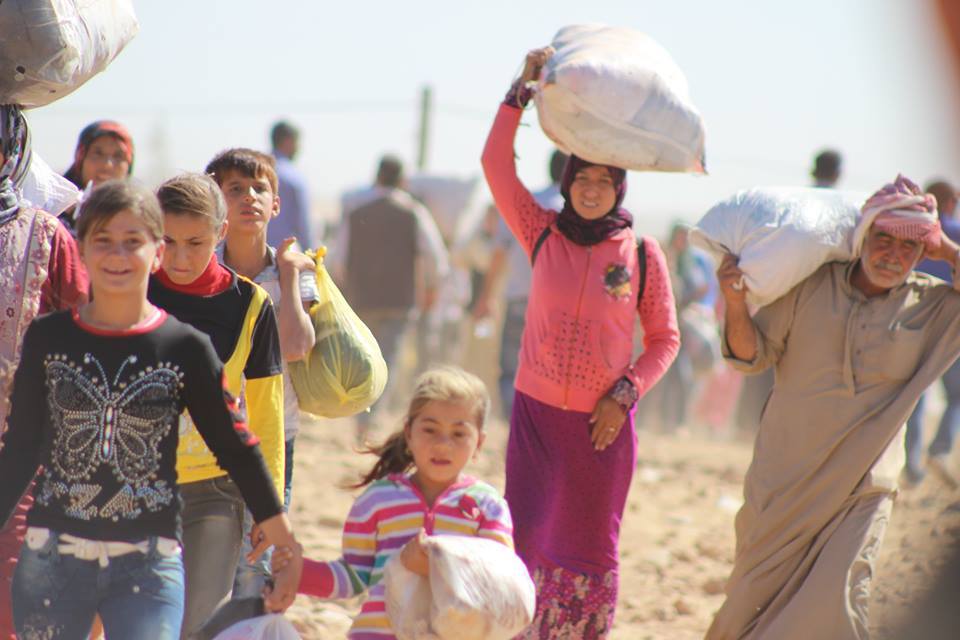
Investigating Ethnic Cleansing Requires An Independent Fact-Finding Mission
On June 19, the Kurdish People’s Protection Units (YPG) took control of Tal Abyad and drove out the Islamic State of Iraq and al-Sham (ISIS). The fighting caused about 20,000 civilians to flee to neighboring Turkey, and shortly after, rumors spread that Kurdish forces practiced ethnic cleansing. Specifically, fifteen Syrian rebel groups accused the Kurds of driving out Sunni Arab and Turkmen residents of Tal Abyad. The Turkish government corroborated the accusations and blamed the West for replacing Arabs and Turkmen with members of the Kurdistan Worker’s Party (PKK). The YPG strongly denied these accusations claiming that they were evacuating families to safety during the conflict but have since been welcoming them back home.
The rebels and Turkey have no verified data to support their claims, and refugees from Tal Abyad have provided contradicting stories on what actually took place. The Syrian National Coalition (SNC) issued a statement about a fact finding mission but the results have yet to be published. Kurds, however, have also failed to provide factual support in their defense. As speculation and rumors increase, tensions between the different ethnic groups have escalated and could lead to irreparable damage to the country’s social fabric. Leaders in Turkey and Syria as well as media outlets reporting on Tal Abyad have not been sensitive to the fragile situation and have instead resorted to alarmism — a tactic that will have long-term negative impacts on post-conflict reconciliation.
Other conflicts provide numerous examples of politicians and media using ethnic and sectarian tensions to fuel increased violence for their own ends. A notable example is the collapse of the former Yugoslavia. Slobodan Milosevic and Radovan Karadzic, both ethnic Serbs, propagated their political agenda by highlighting the differences between their group as compared to Croats and Bosniaks. This process of “othering” caused hatred among the groups, leading to years of violent conflict and ongoing tensions. In the transitional period, these states have experienced extreme difficulty in achieving reconciliation. The Yugoslav Wars, the Rwandan genocide, and the ongoing violence in Iraq all demonstrate that rhetoric and policies that focus on ideological, religious, racial, or ethnic differences can erode a society’s feeling of shared humanity, leading to prolonged violence and resentment within communities.
At times, community leaders fuel tensions unintentionally by misusing the terms ethnic cleansing and genocide. In actuality, “ethnic cleansing” is not a defined crime under international law. The International Criminal Court’s Rome Statute covers two similar crimes: 1) “genocide,” which is the act of killing or attempting to destroy a particular national, ethnic, racial, or religious group and 2) “forced population transfer,” which is a crime against humanity defined as the widespread and systematic forced displacement of a particular group “by expulsion or other coercive acts from the area in which they are lawfully present.” In situations like Tal Abyad, where accusations are circulating from different groups, the most effective steps are to understand the definitions of each violation and document the occurrence of events to determine if the violations occurred.
Below are five principles outlined for documenters who seek to gather information on forced population transfers:
- Ensure the independence of the fact-finding mission. The SNC and YPG both have political motivations that taint the veracity of their findings. The UN Commission of Inquiry, for example, would be better able to conduct an unbiased assessment.
- Go to the site of the alleged violation, if possible. Being directly on site allows firsthand exposure to what occurred.
- Conduct as many interviews as feasible with civilians from all ethnic groups that have fled Tal Abyad. The higher the sample size, the more accurate the data is in identifying trends and verifying stories.
- Frame the survey on in-depth, open-ended questions (i.e., “what happened?”) that elicit a sequential narrative and do not ask leading questions that presuppose the interviewee’s answers. Those who are falsifying or exaggerating the truth will not be able to maintain a coherent story.
- Follow-up by asking fact-based, specific questions based on the elements of each type of violation. For example, one element of forcible population transfer is “expulsion or other coercive act.” Rather than asking, “Were you forcibly expelled?” which is a legal determination that does not get at the facts of the matter, a better question would be “What actions did the Kurdish YPG take that caused you to leave your home?” and “Have you tried to return to Tal Abyad? Why or why not?”
Carefully documenting the situation in Tal Abyad, and others similar to it, will mitigate the ethnic tensions that have been exacerbated during the crisis. There should be no space allowed for rumors or speculation to drive a widening gap between Syria’s diverse population. When Syria shifts into transition, any efforts taken to minimize the wedge between different groups will prove helpful in achieving reconciliation and bringing accountability to those who have suffered.
For more information and to provide feedback please email SJAC at [email protected].